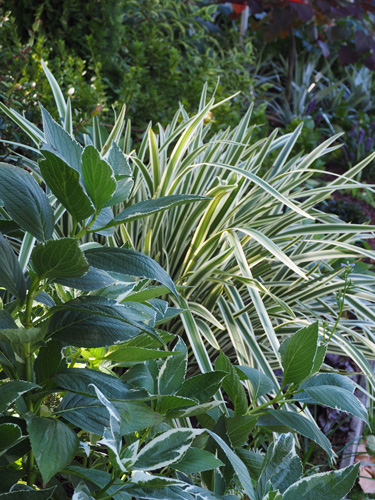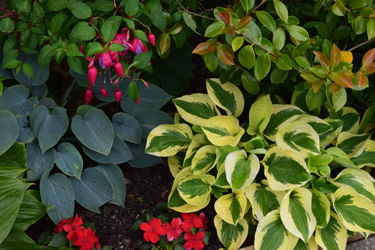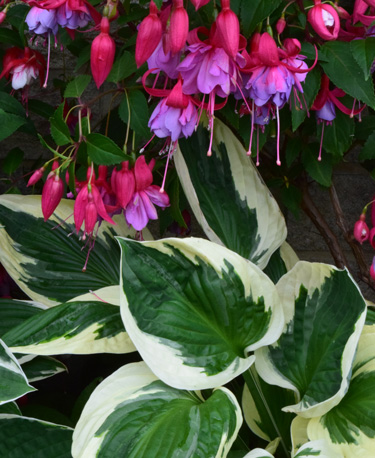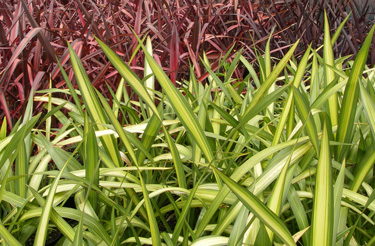Bright sparks
Contrasting textures of green on green is key to creating a fantastic all season garden. And adding a splash of variegated foliage is like turning the lights on, especially on dull winter days.
The important thing is to use variegated plants as spotlights, not floodlights. Overuse them and your garden will wind up looking washed out and sickly.
Variegated plants are particularly useful for lighting up shady areas, and many of them prefer protection from hot sun. On the other hand, yellow-variegated leaves often give their best colour in sun.
Because they have less chlorophyll, most variegated plants grow more slowly and not as large as their plain green versions. This can be a very useful thing in a small garden or when planting in containers.
When an all-green shoot will appears on a variegated plant, cut them out completely so the entire plant doesn't revert back to its more vigorous green form.
The origins of variegation are complex and varied. Some are genetic and passed on via seed. Some result from a benign virus. But most variegated plants came about as a chance mutation, and must be reproduced via vegetative means, not seed.
Primarily it is the chlorophyll that is affected, but other pigments can also be involved to varying degrees. Hence the boundless array of different leaf colours and patterns. There are stripes, spots and freckles, leaves with fine margins and those with broad gold margins. Nothing brings out the snob in a gardener like a variegated plant. But the menu is extensive, with something for every taste and situation.
Variegated favourites
- Agapanthus ‘Tinkerbell’
- Agave cultivars
- Ajuga ‘Arctic Fox’
- Brunnera ‘Jack Frost’
- Bromeliads
- Buxus sempervirens 'Variegata'.
- Carex morrowii
- Carex siderosticha
- Carex ‘Rekohu Sunrise’
- Ceanothus ‘Diamond Heights’
- Coprosma cultivars
- Cornus controversa ‘Variegata’
- Corokia cultivars
- Dianella
- Farfugium (syn.Ligularia) varieties
- Hebe cultivars
- Heuchera ‘Green Spice’
- Hostas
- Hoheria (Variegated NZ lacebark)
- Macropiper ‘Golden Heart’
- Meryta ‘Moonlight’ (puka)
- Metrosideros kermadecensis ‘Variegata’
- Phormium ‘Yellow Wave’ and other cultivars
- Pisonia brunoniana 'Variegata'
- Pittosporum cultivars
- Pseudopanax Gold Splash
- Weigela florida ‘Variegata’
- Yucca cultivars
7-Jul-2016






